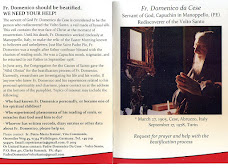
The Veil of Manoppello showing both the image and transparency

Prof. Jan S. Jaworski delivering the Paper
One of the more important papers, in my opinion, given at the Frascati Conference on the Scientific Approach to the images of Turin, Manoppello and Guadalupe held in May 2010 was the paper given by Prof. Jan S. Jaworski of the Faculty of Chemistry at the University of Warsaw in Poland. Here are the final points stated by Prof. Jaworski in his paper entitled "Properties of byssal thread and the chemical nature of colors of the Veil of Manoppello".
The brown color of byssus threads originates from the pheomelanin pigments; its marker (BTCA) was detected by HPLC after degradation.
Degradation of byssus threads (chemically by some oxidants in proper media) results in changes of the brown color: bleaching to pale straw-color, to colorless and to reddish.
It looks highly probable that the image on the Veil of Manoppello (at least in most parts) was formed by modifications of pheomelanin, natural pigment of byssus.
Thus, there is an additional similarity with the image on the Shroud of Turin, which was "created" by oxidation dehydration processes of cellulose of the linen.
Byssus properties are responsible for some unique properties of the Veil of Manoppello, like the transparency after strong illumination.
Future detailed investigations on byssus properties (including color changes) are desirable and they are possible even if the examination of the original Veil of Manoppello will not be available.





No comments:
Post a Comment